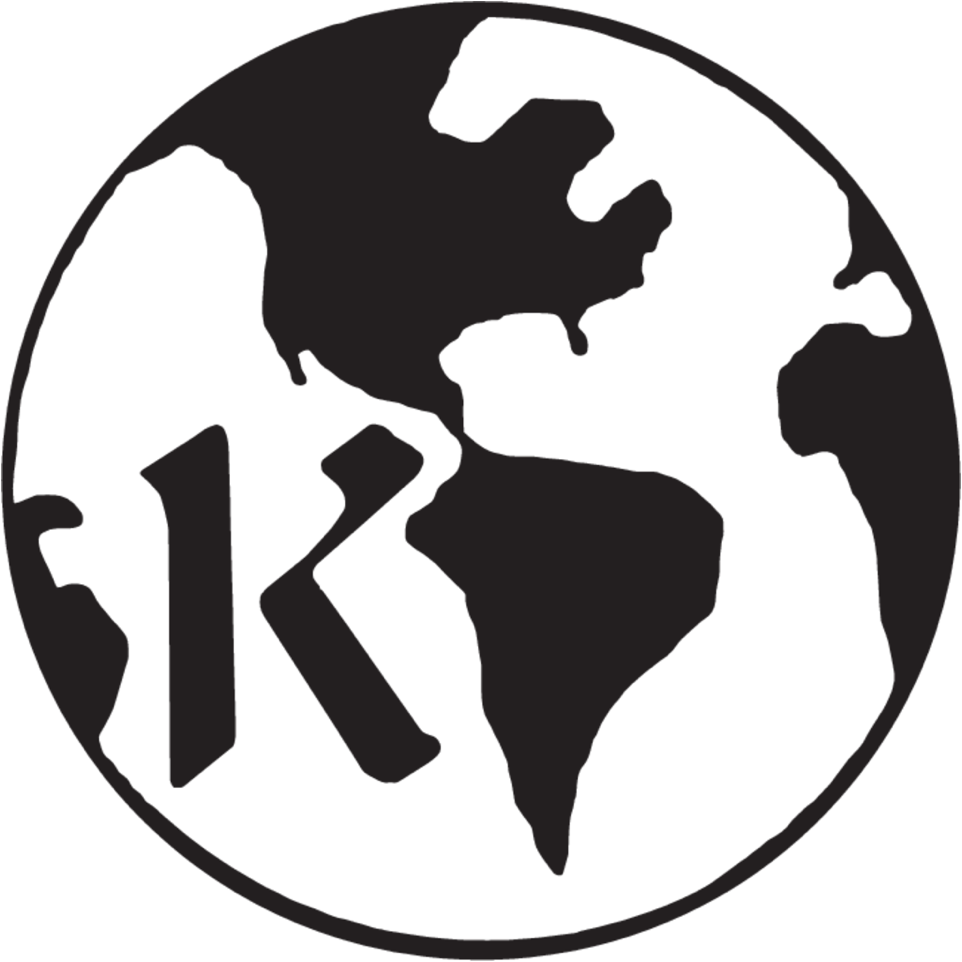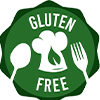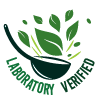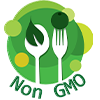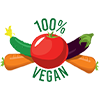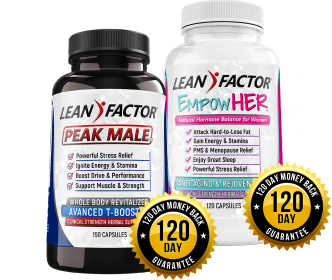Suscríbase y ahorre + Obtenga envío gratis en todos los pedidos de envío automático
Polvo de extracto de curcumina
La curcumina, el componente activo destacado de la cúrcuma (Curcuma longa), ha atraído una considerable atención científica, con más de 1.000 estudios publicados y 7.000 artículos que aclaran sus posibles atributos medicinales[1].
La curcumina, que comprende entre un 2 % y un 4 % de la cúrcuma en su forma de raíz completa, tiene una larga historia y ha sido una parte integral del consumo diario en la India durante más de 2500 años , consolidando así su importancia cultural en la dieta y la salud[3].
Un aspecto importante de la eficacia de la curcumina radica en su biodisponibilidad , que se refiere al grado en que el cuerpo humano puede utilizar este poderoso compuesto. Los estudios han demostrado que su biodisponibilidad puede aumentar hasta 100 veces cuando se ingiere con grasa o pimienta[2].
Por ejemplo, nuestro polvo de extracto de curcumina especializado está formulado con una notable concentración de curcuminoides del 95 %, lo que refleja una proporción de extracto de 30:1 y lo posiciona como una fuente sumamente potente de este compuesto ventajoso.
Constituents of Curcumin Extract include:
- Phytochemicals: Alpha-Alantone, Alpha-Terpineol, Arabinose, AR-Turmerone, Arabinose, Azulene, Bisabolene, Cinnamic-Acid, Curcumin, Curlone, L-Alpha-Cumcumene, L-Beta-Curcumene, Turmerone, Zingiberene
- Essential Oils: Beta-Pinene, Caryophyllene, Cineole, Curcumene, Curcumenol, Curdione, Eugenol, Limonene, Linalol, Terpinene, Terpineol
Suggested Use: Mix ½ to 1 teaspoon with your favorite juice or add to your favorite smoothie.
Mixing Suggestions: To increase flavor and nutritional profile, combine with our organic ginger, piperine extract, and coconut oil.
Botanical Name: Curcuma Longa.
Other Names: Indian saffron, Curcumin, Jiang Huang, Ukon, Goeratji, Kakoenji, Koenjet, Kondin, Kunir, Kunyit, Oendre, Rame, Renet, Temu kuning, Temu kunyit, Tius, Terra Merita, Safran Boubou, Safran De Malabar, Safran Des Indes.
Parts Used: Turmeric Root.
Ingredients: Curcumin Extract standardized to 95% Curcuminoids.
Origin: Grown and extracted in China and packaged with care in Florida, USA.
Lean Factor strives to offer the highest quality organically grown, raw, vegan, gluten-free, non-GMO products and exclusively uses low-temperature drying techniques to preserve all the vital enzymes and nutrients. Our 95% Curcumin Extract Powder passes our strict quality assurance, which typically includes testing for botanical identity, heavy metals, chemicals, and microbiological contaminants. LeanFactor.com offers 95% Curcumin Extract Powder packaged in airtight stand-up, resealable foil pouches for optimum freshness. Once opened, push the air out of the pouch before resealing it to preserve maximum potency. Keep your 95% Curcumin Extract Powder in a cool, dark, dry place.
Sources & References
1. Aggarwal, B. B., & Harikumar, K. B. (2009). Potential therapeutic effects of curcumin, the anti-inflammatory agent, against neurodegenerative, cardiovascular, pulmonary, metabolic, autoimmune, and neoplastic diseases. The International Journal of Biochemistry & Cell Biology, 41(1), 40-59.
2. Shoba, G., et al., 1998, "Influence of Piperine on the Pharmacokinetics of Curcumin in Animals and Human Volunteers," Planta Medica, 64(4), 353-356. Available from: https://www.ncbi.nlm.nih.gov/
3. Prasad, S., & Aggarwal, B.B., 2011, "Turmeric, the Golden Spice: From Traditional Medicine to Modern Medicine," Herbal Medicine: Biomolecular and Clinical Aspects, 2nd edition. Available from: https://www.ncbi.nlm.nih.gov/books/NBK92752/
4. Hewlings, S. J., & Kalman, D. S. (2017). Curcumin: A Review of Its Effects on Human Health. Foods, 6(10), 92.
5. Tapsell, L. C., Hemphill, I., Cobiac, L., Patch, C. S., Sullivan, D. R., Fenech, M., ... & Mann, N. J. (2006). Health benefits of herbs and spices: the past, the present, the future-Medical Journal of Australia, 185(4), S1-S24.
6. Jurenka, J. S. (2009). Anti-inflammatory properties of curcumin, a principal constituent of Curcuma longa: a preclinical and clinical research review. Alternative medicine review, 14(2), 141-153.
7. Anand, P., Kunnumakkara, A. B., Newman, R. A., & Aggarwal, B. B. (2007). Bioavailability of curcumin: problems and promises. Molecular pharmaceutics, 4(6), 807-818.
8. Maheshwari, R. K., Singh, A. K., Gaddipati, J., & Srimal, R. C. (2006). Multiple biological activities of curcumin: a short review. Life sciences, 78(18), 2081-2087.
9. Maiti, P., Dunbar, G. L. (2018). Use of Curcumin, a Natural Polyphenol for Targeting Molecular Pathways in Treating Age-Related Neurodegenerative Diseases—international journal of molecular sciences, 19(6), 1637.
10. Mishra, S., & Palanivelu, K. (2008). The effect of curcumin (turmeric) on Alzheimer's disease: An overview. Annals of Indian Academy of Neurology, 11(1), 13.
11. Aggarwal, B. B., & Sung, B. (2009). Pharmacological basis for the role of curcumin in chronic diseases: an age-old spice with modern targets. Trends in pharmacological sciences, 30(2), 85-94.
12. Usharani, P., Mateen, A. A., Naidu, M. U., Raju, Y. S., & Chandra, N. (2008). Effect of NCB-02, atorvastatin, and placebo on endothelial function, oxidative stress, and inflammatory markers in patients with type 2 diabetes mellitus: a randomized, parallel-group, placebo-controlled trial.
13. Gupta, S. C., Sung, B., Kim, J. H., Prasad, S., Li, S., & Aggarwal, B. B. (2013). Multitargeting by turmeric, the golden spice: From kitchen to clinic. Molecular nutrition & food research, 57(9), 1510-1528.
14. Prasad, S., & Aggarwal, B. B. (2011). Turmeric, the Golden Spice: From Traditional Medicine to Modern Medicine. Herbal Medicine: Biomolecular and Clinical Aspects, 2nd edition.
15. C. (1999). Efficacy of curcumin in the management of chronic anterior uveitis. Phytotherapy Research, 13(4), 318-322.
16. Kiso, Y., Y. Suzuki, N. Watanabe, Y. Oshima, H. Hikino. 1983. Antihepatotoxic principles of Curcuma longa rhizomes. Planta Med 49(3):185" 187
17. Kiuchi, F. et al. 1993. The nematocidal activity of turmeric: synergistic action of curcuminoids. Chem Pharm Bull (Tokyo) 41(9):1640" 1643
18. Kositchaiwat, C., S. Kositchaiwat, J. Havanondha. 1993. Curcuma longa Linn. in the treatment of gastric ulcer comparison to liquid antacid: a controlled clinical trial. J Med Assoc Thai 76(11):601" 605
19. Leung, A.Y. and S. Foster. 1996. Encyclopedia of Common Natural Ingredients Used in Food, Drugs and Cosmetics, 2nd ed. New York: John Wiley & Sons, Inc. 499” 501
20. McGuffin, M., C. Hobbs, R. Upton, A. Goldberg. 1997. American Herbal Product Association’s Botanical Safety Handbook. Boca Raton: CRC Press. 39
21. Nadkarni, K.M. 1976. Indian Materia Medica . Bombay: Popular Prakashan. 414 - 418.
22. Polasa, K., TC Raghuram, T.P. Krishna, K. Krishnaswamy. 1992. Effect of turmeric on urinary mutagens in smokers. Mutagenesis 7(2):107" 109
23. Rao, C.V., A. Rivenson, B. Simi, B.S. Reddy. 1995. Chemoprevention of colon carcinogenesis by dietary curcumin, a naturally occurring plant phenolic compound. Cancer Res 55(2):259" 266
24. Roth, G.N., A. Chandra, M.G. Nair. 1998. Novel bioactivities of Curcuma longa constituents. J Nat Prod 61(4):542" 545
25. Schulz, V., R. Hansel, V.E. Tyler. 1998. Rational Phytotherapy: A Physicians’ Guide to Herbal Medicine. New York: Springer
26. Selvam, R., L. Subramanian, R. Gayathri, N. Angayarkanni. 1995. The antioxidant activity of turmeric (Curcuma longa). J Ethnopharmacol 47(2):59" 67
27. Srinivas, L. and V.K. Shalini. 1991. DNA damage by smoke: protection by turmeric and other inhibitors of ROS. Free Radic Biol Med 11(3):277" 283
28. Srinivas, L., V.K. Shalini, M. Shylaja. 1992. Turmeric: a water-soluble antioxidant peptide from turmeric (Curcuma longa ). Arch Biochem Biophys 292(2):617" 623
29. Srivastava, K.C. 1989. Extracts from two frequently consumed spices” cumin (Cucinum cyminum ) and turmeric (Curcuma longa),” inhibit platelet aggregation and alter eicosanoid biosynthesis in human blood platelets Prostaglandins Leukot Essent Fatty Acids 37(1):57” 64
30. Srivastava, R., M. Dikshit, R.C. Srimal, B.N. Dhawan. 1985. Anti-thrombotic effect of curcumin. Thrombosis Res 40(3):413"“417
31. Srivastava, R., V. Puri, R.C. Srimal, B.N. Dhawan. 1986. Effect of curcumin on platelet aggregation and vascular prostacyclin synthesis. Arzneimforsch 36(4):715" 717
32. Stansbury, J.E. 1999. Cancer prevention diet” the potential of protective phytochemicals. Nutrition Science News 4(8):380" 386
33. Subramanian, M., M. Sreejayan, N. Rao, T.P. Devasagayam, B.B. Singh. 1994. Diminution of singlet oxygen-induced DNA damage by curcumin and related antioxidants. Mutat Res 311(2):249" 255
34. Thamlikitkul, V. et al. 1989. A randomized, double-blind study of Curcuma domestica Val. for dyspepsia. J Med Assoc Thai 72(11):613" 620
35. Tu, G. (ed.). 1992. Pharmacopoeia of the People’s Republic of China (English Edition 1992). Beijing: Guangdong Science and Technology Press. 202 “203
36. Tyler, V.E. 1994. Herbs of Choice: The Therapeutic Use of Phytomedicine. New York: Pharmaceutical Products Press
37. Yen, K.Y. 1992. The Illustrated Chinese Materia Medica” Crude and Prepared. Taipei, Taiwan: SMC Publishing, Inc. 82
38. Ferreira, L.A. et al. 1992. Antivenom and biological effects of ar-turmerone isolated from Curcuma longa Toxicon 30(10):1211” 1218
39. Jentzsch, K., T. Gonda, H. Haller. 1959. Papierchromatographische Unterscheidung von Curcuma domestica Val. und Curcuma xanthorrhiza Roxb. Pharm Acta Helv 34(4):181"188
40. Jiangsu Institute of Modern Medicine. 1977. Zhong Yao Da Ci Dian (Encyclopedia of Chinese Materia Medica), Vol. 3. Shanghai: Shanghai Scientific and Technical Publications
41. Leung, A.Y. 1984. Chinese Herbal Remedies. New York: Universe Books. [Republished as Chinese Healing Foods and Herbs. 1993. Glen Rock: AYSL Corp.]
42. Qureshi, S., A.H. Shah, A.M. Ageel. 1992. Toxicity studies on Alpinia galanga and Curcuma longa. Planta Med 58(2):124" 127
43. Randhawa, G.S. and R.K. Mahey. 1988. Herbs, Spices, and Medicinal Plants: Recent Advances in Botany, Horticulture, and Pharmacology, Vol. 3. Phoenix: Oryx Press
44. Srimal, R.C. and B.N. Dhawan. 1973. Pharmacology of diferuloylmethane (curcumin), a non-steroidal anti-inflammatory agent. J Pharm Pharmacol 25(6):447" 452
45. http://www.ncbi.nlm.nih.gov/pmc/articles/PMC2781139/
46. http://www.vitasearch.com/get-clp-summary/40704
47. http://www.ncbi.nlm.nih.gov/pmc/articles/PMC2781139
48. http://science.naturalnews.com/curcumin.html
49. https://www.ncbi.nlm.nih.gov/pubmed/22058071
50. http://www.vitasearch.com/get-clp-summary/40414
51. http://www.atherosclerosis-journal.com
52. http://www.naturalnews.com/042908_turmeric_skin_health_radiation_damage.html
53. http://www.naturalnews.com/029525_turmeric_curcumin.html
54. http://dermatologistsblog.com/sunburns/topical-vesicular-formulations-of-curcuma-longa-extract-on-recuperating-the-uv-damaged-skin-author-interview/
55. http://science.naturalnews.com/2009/1222351_Effects_of_a_turmeric_extract_Curcuma_longa_on_chronic_ultraviolet.html
56. http://www.naturalnews.com/043105_curcumin_cancer_cell_invasion_metastasis_suppression.html
57. http://science.naturalnews.com/2008/2001954_Curcumin_inhibits_lung_cancer_cell_invasion_and_metastasis_through_the.html
58. http://science.naturalnews.com/curcumin.html
59. http://www.naturalnews.com/043188_curcumin_pituitary_tumors_apoptosis.html
60. http://www.naturalnews.com/043131_curcumin_turmeric_diabetes_prevention.html
61. http://yourlife.usatoday.com/health/healthyperspective/post/2012-07-30/curry-and-diabetes-nodding-sickness-runners-record-animal-outrun-olympians/814596/1?csp=34news
62. http://www.reuters.com/article/2012/07/30/us-diabetes-curry-idUSBRE86T00220120730?feedType=RSS&feedName=healthNews&utm_source=dlvr.it&utm_medium=twitter
63. http://www.foodconsumer.org/newsite/2/Diabetes/curcumin_supplements_type_2_diabetes_mellitus_0804120814.html
64. http://science.naturalnews.com/2008/1206589_Curcumin_diferuloylmethane_inhibits_cell_proliferation_induces_apoptosis_and_decreases_hormone.html
65. http://www.ncbi.nlm.nih.gov/pmc/articles/PMC2488238/
66. http://www.naturalnews.com/037879_curcumin_cancer_cells_turmeric.html
67. http://www.mdanderson.org/publications/cancerwise/archives/2008-september/cancerwise-september-2008-curcumin-temporarily-slows-pancreatic-cancer.html
68. http://www.naturalnews.com/028556_turmeric_anti-inflammatory.html
69. http://www.hopkinsmedicine.org/neurology_neurosurgery/specialty_areas/pituitary_center/pituitary-tumor/types/pituitary-adenoma.html
70. http://www.naturalnews.com/045433_turmeric_fluoride_poisoning_brain_health.html
71. http://www.ncbi.nlm.nih.gov/pmc/articles/PMC3969660/
72. http://www.ncbi.nlm.nih.gov/pmc/articles/PMC3969660/
73. http://www.fluorideresearch.org/394/files/FJ2006_v39_n4_p280-284.pdf
74. http://science.naturalnews.com/fluoride.html
75. http://science.naturalnews.com/turmeric.html
76. http://www.naturalnews.com/054269_turmeric_tuberculosis_drug_resistance.html
77. http://www.ncbi.nlm.nih.gov/pubmed/22151933
78. http://ndb.nal.usda.gov/ndb/foods/show/273
79. http://www.ars-grin.gov/cgi-bin/duke/farmacy2.pl
80. Ammon, H.P., and M.A. Wahl. 1991. Pharmacology of Curcuma longa. Planta Med 57(1):1" 7
81. Ammon, H.P., M.I. Anazodo, H. Safayhi, B.N. Dhawan, R.C. Srimal. 1992. Curcumin: a potent inhibitor of leukotriene B4 formation in rat peritoneal polymorphonuclear neutrophils. Planta Med 58(2):226
82. Ayurvedic Pharmacopoeia of India (API). 1989. New Delhi: Government of India” Ministry of Health and Family Welfare” Department of Health. 45 “46
83. Baumann, J.C., K. Heintze, H.W. Muth. 1971. Klinisch-experimentelle untersuchungen der gallen-, pankreas- und magensaftsekretion unter den phytocholagogen wirkstoffen einer Carduus marianus "“Chelidonium "“Curcuma suspension [Clinico-experimental studies on the secretion of bile, pancreatic and gastric juice under the influence of phytocholagogous agents of a suspension of Carduus marianus, Chelidonium and Curcuma] Arzneimforsch 21(1):98"“101
84. Baumann, J.C. 1975. Ãœber die wirkung von Chelidonium , Curcuma , Absinth und Carduus marianus auf die galle-und pankreassekretion bei hepatopathien [Effect of Chelidonium, Curcuma , Absinth and Carduus marianus on the bile and pancreatic secretion in liver diseases]. Med Monatsschr 29(4):173“180
85. Braun, R. et al. 1997. Standardzulassungen far Fertigarzneimittel"”Text and Kommentar . Stuttgart: Deutscher Apotheker Verlag
86. Budavari, S. (ed.). 1996. The Merck Index: An Encyclopedia of Chemicals, Drugs, and Biologicals, 12th ed. Whitehouse Station, NJ: Merck & Co., Inc. 450, 1674
87. But, PPH et al. (eds.). 1997. International Collation of Traditional and Folk Medicine. Singapore: World Scientific. 207 ““208
88. Charles, V. and S.X. Charles. 1992. The use and efficacy of Azadirachta indica ADR ("Neem") and Curcuma longa (“˜Turmeric’) in scabies. A pilot study. Trop Geogr Med 44(1" 2):178" 181
89. Gonda, R., M. Tomoda, K. Takada, N. Ohara, N. Shimizu. 1992. The core structure of ukonan A, a phagocytosis-activating polysaccharide from Curcuma longa's rhizome, and the degradation products' immunological activities. Chem Pharm Bull (Tokyo) 40(4):990" 993
90. Gonda, R., M. Tomoda, N. Ohara, K. Takada. 1993. Arabinogalactan core structure and immunological activities of ukonan C, an acidic polysaccharide from Curcuma longa’s rhizome. Biol Pharm Bull 16(3):235" 238
91. Hastak, K. et al. 1997. Effect of turmeric oil and turmeric oleoresin on cytogenetic damage in patients with oral submucous fibrosis. Cancer Lett 116(2):265" 269
92. Iwu, M.M. 1993. Handbook of African Medicinal Plants. Boca Raton: CRC Press. 164 “166
93. The Japanese Standards for Herbal Medicines (JSHM). 1993. Tokyo: Yakuji Nippo, Ltd. 279
94. Kapoor, L.D. 1990. CRC Handbook of Ayurvedic Medicinal Plants. Boca Raton: CRC Press. 149 - 150
95. Aggarwal, B. B. (2011). Turmeric, the Golden Spice: From Traditional Medicine to Modern Medicine. Herbal Medicine: Biomolecular and Clinical Aspects, 2nd edition.
96. Goel, A., Kunnumakkara, A. B., & Aggarwal, B. B. (2008). Curcumin as "Curecumin": from the kitchen to clinic. Biochemical pharmacology, 75(4), 787-809.
* Reviews & Success Stories Disclaimer
Product reviews solely reflect the views & opinions expressed by the contributors and not those of Lean Factor. Lean Factor does not verify or endorse any claims made in these reviews. Statements have not been evaluated by the FDA and are not intended to diagnose, treat, cure, or prevent any disease or health condition.








